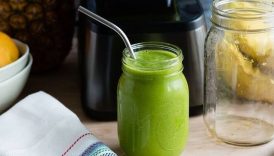Balanced Bites: Crafting a Healthy Living Plate

INTRODUCTION
What is a Balanced Bites Plate?
A Balanced Bites Plate is more than just a plate of food; it’s a visual representation of the ideal ratio of nutrients essential for maintaining health and vitality. This concept simplifies meal planning by showing how to divide your plate into proportionate sections for various food groups, ensuring that you enjoy a variety of nutrients with every meal. Typically, a Balanced Bites Plate includes:
- Balanced Bites: Crafting a Healthy Living Plate
- INTRODUCTION
- What is a Balanced Bites Plate?
- Importance of Crafting a Healthy Living Plate
- UNDERSTANDING NUTRITIONAL NEEDS
- Macronutrients
- Micronutrients
- BUILDING A BALANCED PLATE
- Choosing a Variety of Foods
- Portion Control
- INCORPORATING FRUITS AND VEGETABLES
- Benefits of Fruits and Vegetables
- Tips for Increasing Intake
- SELECTING WHOLE GRAINS AND LEAN PROTEINS
- Whole Grains for Energy
- Lean Proteins for Muscle Health
- HEALTHY FATS AND HYDRATION
- Importance of Healthy Fats
- Staying Hydrated for Optimal Health
- Fruits and Vegetables: Filling half your plate with colorful produce.
- Whole Grains: Allocating a quarter of your plate to unrefined grains such as brown rice, quinoa, or whole wheat.
- Lean Proteins: Using the remaining quarter for options like chicken breast, fish, beans, or legumes.
Incorporating these elements ensures that your meals are not only satisfying but also provide the nutrients your body craves.
Importance of Crafting a Healthy Living Plate
Crafting a Healthy Living Plate is crucial for several reasons. It acts as a guide to making healthier food choices and can significantly impact one’s overall well-being. Here’s why it matters:
- Promotes Nutritional Balance: Ensures that you are not only enjoying your meals but also meeting your nutritional requirements.
- Supports Weight Management: Encourages portion control and mindful eating, which are essential for maintaining a healthy weight.
- Improves Energy Levels: A well-balanced meal supports better energy throughout the day, keeping you fueled for activities, work, or exercise.
For example, someone who consistently eats from a Balanced Bites Plate may find that they have more energy for their workouts and better focus during the day. Ultimately, the Balanced Bites Plate can lead to healthier eating habits, paving the way for a more vibrant and energetic lifestyle.
UNDERSTANDING NUTRITIONAL NEEDS
Macronutrients
Understanding nutritional needs begins with the concept of macronutrients, the essential building blocks of our diets. These nutrients provide energy, support growth, and play key roles in bodily functions. There are three main macronutrients:
- Carbohydrates: The body’s primary source of energy. They can be found in foods like whole grains, fruits, and vegetables. For example, when a person enjoys a bowl of oatmeal topped with berries, they are fueling up with whole carbohydrates that release energy slowly, keeping them feeling full longer.
- Proteins: These are vital for muscle repair and growth. Lean meats, fish, eggs, legumes, and nuts are great sources. Imagine someone recovering from a workout – protein post-exercise can aid in quicker recovery.
- Fats: While often misunderstood, healthy fats are crucial for hormone production and nutrient absorption. Foods like avocados, nuts, and olive oil should be included. Consider someone who incorporates olive oil in their salads; they are not only enhancing flavor but also boosting the absorption of vitamins.
Micronutrients
While macronutrients give us energy, micronutrients ensure that our bodies function optimally. These include vitamins and minerals, often required in smaller amounts but equally important.
- Vitamins: Essential for processes like immune function and energy production. For instance, vitamin C found in oranges aids the immune system, while B vitamins support energy metabolism.
- Minerals: Such as calcium and iron, which are vital for bone health and the formation of red blood cells, respectively. Consuming dairy products or leafy greens contributes to adequate calcium intake, while red meat or beans can help meet iron needs.
Incorporating a diverse range of foods rich in both macronutrients and micronutrients not only enhances one’s meals but also lays the foundation for a healthy and energetic lifestyle. Understanding these nutritional needs helps individuals make informed choices that align with their health goals.
BUILDING A BALANCED PLATE
Choosing a Variety of Foods
Building a balanced plate begins with the idea of variety. Choosing a diverse selection of foods not only makes meals more enjoyable but also ensures a broader range of nutrients. Let’s explore some categories of foods to include:
- Fruits and Vegetables: Aim for a rainbow of colors! Different colors often indicate different nutrients. For instance, leafy greens provide iron, while bright orange carrots are high in beta-carotene.
- Whole Grains: Instead of refined grains, opt for whole grains such as quinoa, brown rice, or whole wheat pasta. These options contain more fiber and nutrients, keeping you fuller for longer.
- Proteins: Incorporate a mix of both animal and plant-based proteins. For example, consider adding chickpeas and grilled chicken to your salad, creating a dish that’s both hearty and nutritious.
One personal experience involves mixing different foods in a stir-fry; combining veggies like bell peppers, broccoli, and tofu not only adds flavor but also packs it with nutrients.
Portion Control
While variety is key, portion control is equally essential for maintaining a balanced plate. Overeating, even healthy foods, can lead to imbalances. Here are some tips to help manage portions effectively:
- Use Smaller Plates: A practical trick is to use smaller dishes, which can create an illusion of a fuller plate without overeating.
- Divide Your Plate: Visualize your plate divided into sections; half for fruits and veggies, a quarter for whole grains, and a quarter for proteins.
- Mindful Eating: Take your time and savor each bite. Eating slowly can help recognize when you’re full, preventing overeating.
Applying these principles allows individuals to enjoy their meals without guilt while staying aligned with nutrition and health goals. A balanced plate, filled with variety and mindful portions, leads to lasting wellness.
INCORPORATING FRUITS AND VEGETABLES
Benefits of Fruits and Vegetables
Incorporating fruits and vegetables into your diet is one of the most impactful choices you can make for your health. These colorful foods are packed with vitamins, minerals, and fiber, all of which contribute to overall well-being. Here are some benefits of including more fruits and vegetables in your meals:
- Rich in Nutrients: They provide essential nutrients such as vitamin C, potassium, and numerous antioxidants that help combat the effects of aging and disease.
- Improved Digestion: The fiber found in fruits and vegetables supports digestive health and helps maintain a healthy weight.
- Reduced Chronic Disease Risks: Studies suggest that a diet high in fruits and vegetables is linked to lower risks of heart disease, diabetes, and certain cancers.
Personal experience bears this out; someone who begins their day with a smoothie packed with spinach, bananas, and berries often reports better energy levels and enhanced focus throughout the day.
Tips for Increasing Intake
To reap these benefits, it’s essential to find creative ways to increase your fruit and vegetable consumption. Here are some practical tips:
- Snack Smart: Keep fruits like apples or carrot sticks within reach for easy snacking throughout the day.
- Add to Every Meal: Aim to include at least one serving of fruits or vegetables in every meal. For example, adding spinach to an omelet or sliced tomatoes to a sandwich can be simple yet effective.
- Experiment with Recipes: Try new cuisines that emphasize vegetables, such as Mediterranean or Asian dishes. You might discover a love for roasted Brussels sprouts or a fresh, vibrant tabbouleh.
- Join a CSA: Consider joining a Community Supported Agriculture (CSA) program to receive a diverse range of seasonal produce. This not only supports local farmers but also encourages trying new fruits and vegetables.
Incorporating more fruits and vegetables into your daily routine is a delicious way to enhance your diet, support your health, and enjoy the process of cooking and eating.
SELECTING WHOLE GRAINS AND LEAN PROTEINS
Whole Grains for Energy
Selecting whole grains is a vital component of any balanced diet, primarily because they serve as a steady source of energy. Unlike refined grains, which can spike blood sugar levels, whole grains are rich in fiber and nutrients, promoting sustained energy release throughout the day. Here are some popular types of whole grains to consider:
- Brown Rice: A versatile staple that can be added to stir-fries or served alongside grilled proteins.
- Quinoa: This ancient grain isn’t just gluten-free; it contains all nine essential amino acids, making it a complete protein source.
- Oats: Starting the day with oatmeal can provide a hearty breakfast option that keeps you filled up until lunch.
Personally, I discovered the joy of incorporating farro into salads; its nutty flavor and chewy texture add a delightful twist to my meals.
Lean Proteins for Muscle Health
Along with whole grains, lean proteins are essential for muscle repair and overall health. These proteins help with regeneration after exercise and keep you feeling satisfied longer. Here are some excellent sources of lean protein:
- Chicken Breast: A go-to choice for many; it’s versatile and can be seasoned in numerous ways.
- Turkey: Not just for Thanksgiving! Ground turkey can be used in burgers and casseroles for a lighter option.
- Plant-based Proteins: Beans, lentils, and tofu are fantastic alternatives that offer protein while also contributing fiber to your diet.
One personal favorite is a turkey and vegetable stir-fry, which not only boosts my protein intake but also encourages me to add in a variety of colorful vegetables. Incorporating whole grains and lean proteins into your meals can create dishes bursting with flavor and essential nutrients while supporting your energy levels and muscle health. By making these choices, individuals can build healthier eating habits that support an active lifestyle.
HEALTHY FATS AND HYDRATION
Importance of Healthy Fats
When building a balanced diet, it’s easy to overlook the role of healthy fats. However, they are essential for various bodily functions and play an important role in overall health. Unlike trans fats and saturated fats, healthy fats can enhance heart health and support nutrient absorption. Here’s why healthy fats are vital:
- Energy Source: Fats provide a concentrated source of energy, which is especially important for athletes or those with active lifestyles.
- Nutrient Absorption: Some vitamins, like A, D, E, and K, are fat-soluble, meaning they need fats to be absorbed effectively. For instance, drizzling olive oil over a salad can help your body make the most of the nutrients in leafy greens.
- Brain Health: Healthy fats, particularly omega-3 fatty acids found in fish and flaxseed, are crucial for cognitive function and reducing inflammation.
In my own experience, incorporating avocados into my meals has been a game-changer; whether it’s on toast or mixed into smoothies, the creamy texture adds satisfaction without compromising my health.
Staying Hydrated for Optimal Health
Just as healthy fats are essential, staying properly hydrated should be a priority in any health regimen. Water is crucial for digestion, temperature regulation, and the transportation of nutrients throughout the body. Here are some tips to boost your hydration:
- Drink Water First: Make it a habit to drink a glass of water first thing in the morning. It jumpstarts metabolism and hydrates the body after sleep.
- Flavored Water: If plain water isn’t appealing, try infusing it with fruits, herbs, or cucumber for added flavor and nutrients.
- Keep Water Accessible: Having a filled water bottle close by increases the likelihood of sipping throughout the day, especially during busy hours.
From personal experience, carrying a reusable water bottle has helped me stay hydrated during intense workdays. It serves as a constant reminder to drink more water and has improved my overall energy levels. Incorporating healthy fats and staying hydrated not only enhances physical health but also contributes to mental well-being. These vital components create a solid foundation for a balanced lifestyle, empowering individuals to feel their best every day.




